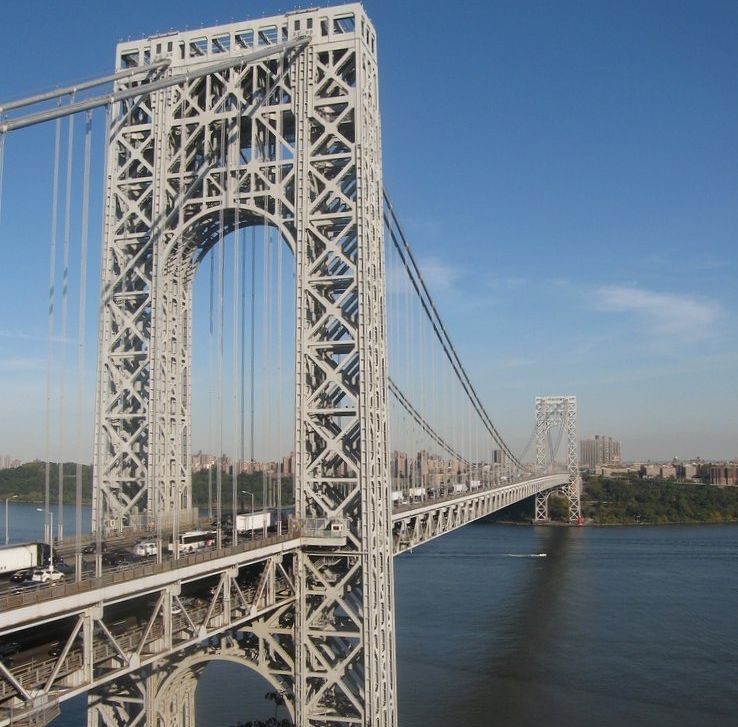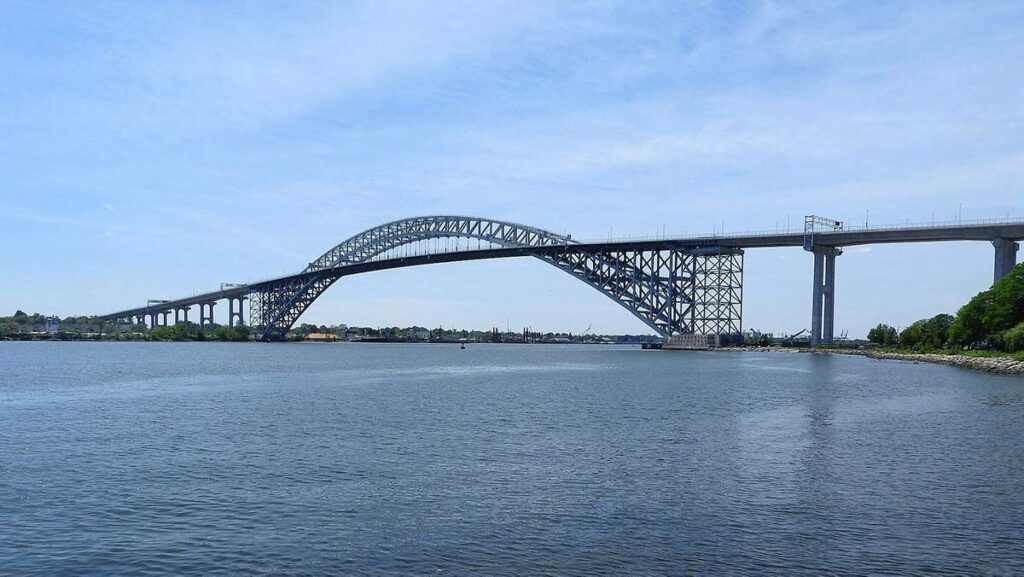The master builder of suspension bridges (+ the Bayonne Bridge 😀 ).
Othmar Hermann Ammann (March 26, 1879 – September 22, 1965) was a Swiss-American civil engineer whose bridge designs include the George Washington Bridge, Verrazzano-Narrows Bridge, and Bayonne Bridge. He received his engineering education at the Polytechnikum in Zürich. In 1904, he emigrated to the United States, spending much of his career working in New York City.

Photo: John O’Connell
By 1925, he had been appointed bridge engineer to the Port of New York Authority. His design for a bridge over the Hudson River was accepted over one developed by his mentor, Lindenthal. Ultimately, this became the George Washington Bridge. Under Ammann’s direction, it was completed six months ahead of schedule for less than the original $60 million budget.
Ammann’s designs for the George Washington Bridge, and, later, the Bayonne Bridge, caught the attention of master builder Robert Moses, who drafted Ammann into his service. The last four of Ammann’s six New York City bridges — Triborough, Bronx-Whitestone, Throgs Neck, and Verrazzano-Narrows Bridge were all built for Moses’ Triborough Bridge and Tunnel Authority. In 1964, Ammann opened the Verrazzano-Narrows Bridge in New York, that had the world’s longest suspended span of 1,300 m, and was the world’s heaviest suspension bridge of its time.

Photo: Jim.henderson
Ammann was known for being able to create bridges that were light and inexpensive, yet they were still simple and beautiful. He was able to do this by using the deflection theory. He believed that the weight per meter of the span and the cables would provide enough stiffness so that the bridge would not need any stiffening trusses. This made him popular during the depression era when being able to reduce the cost was crucial.
About the Author:

Bruno Dursin – Managing Director at Believe in Steel. Bruno has more than 30 years of experience in promoting steel & steel solutions. His clients benefit from his extensive network within the building industry.



